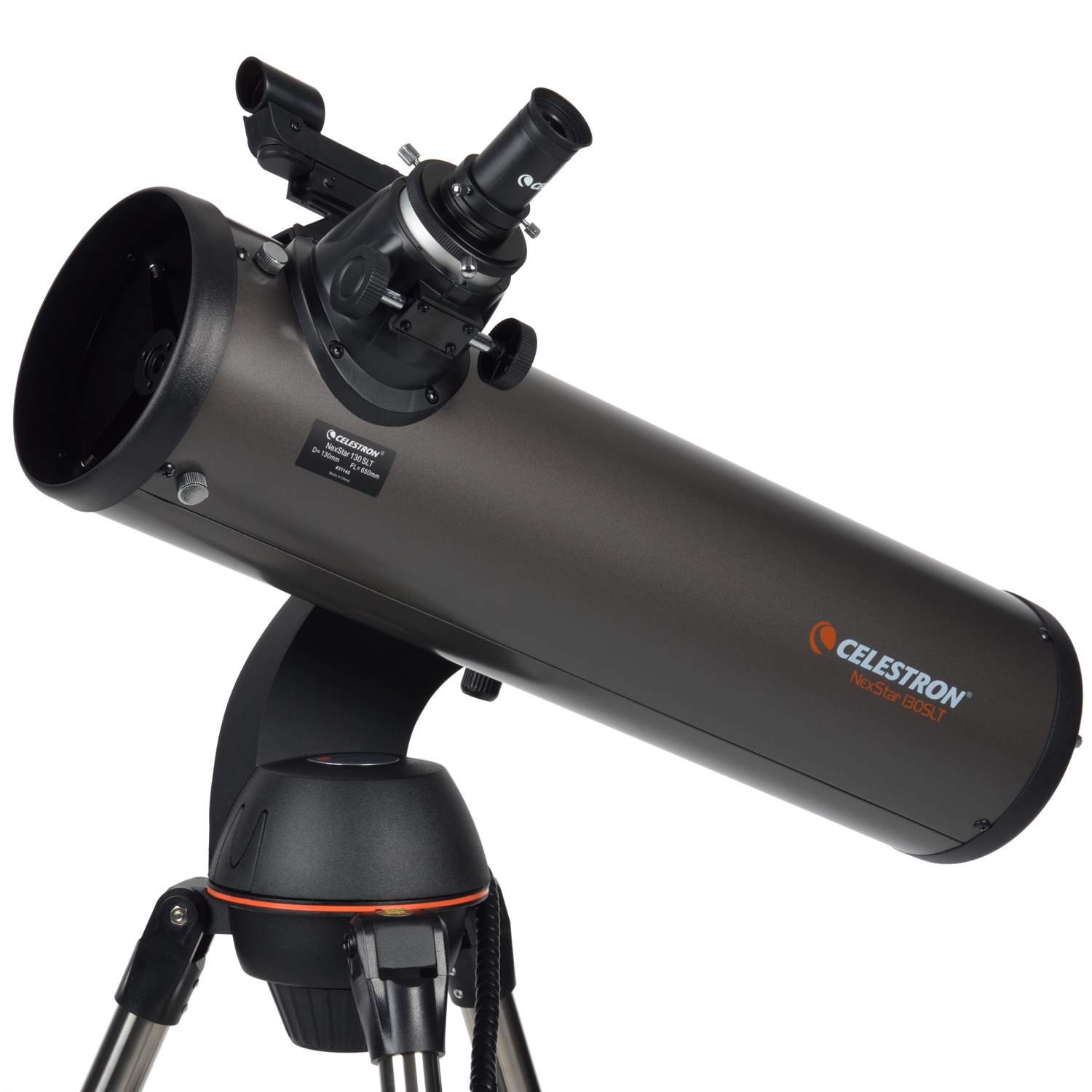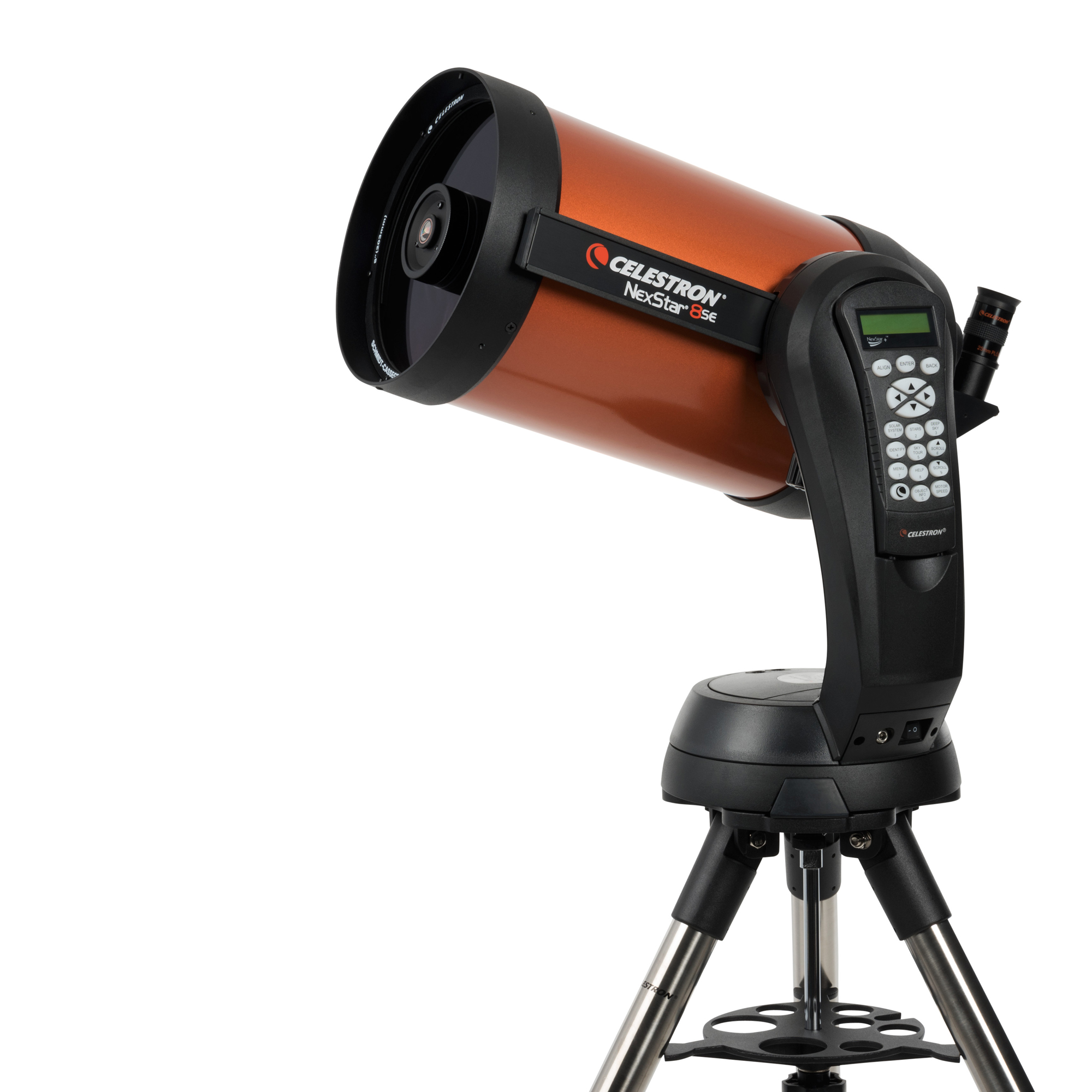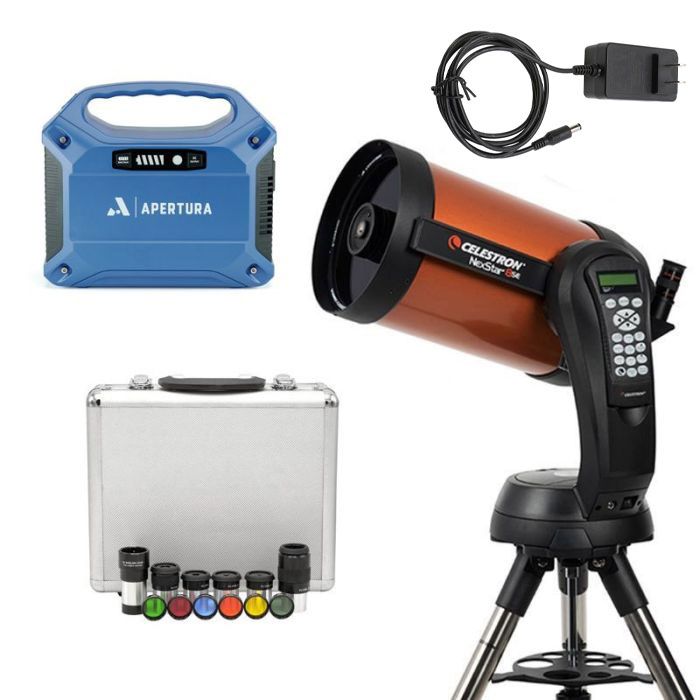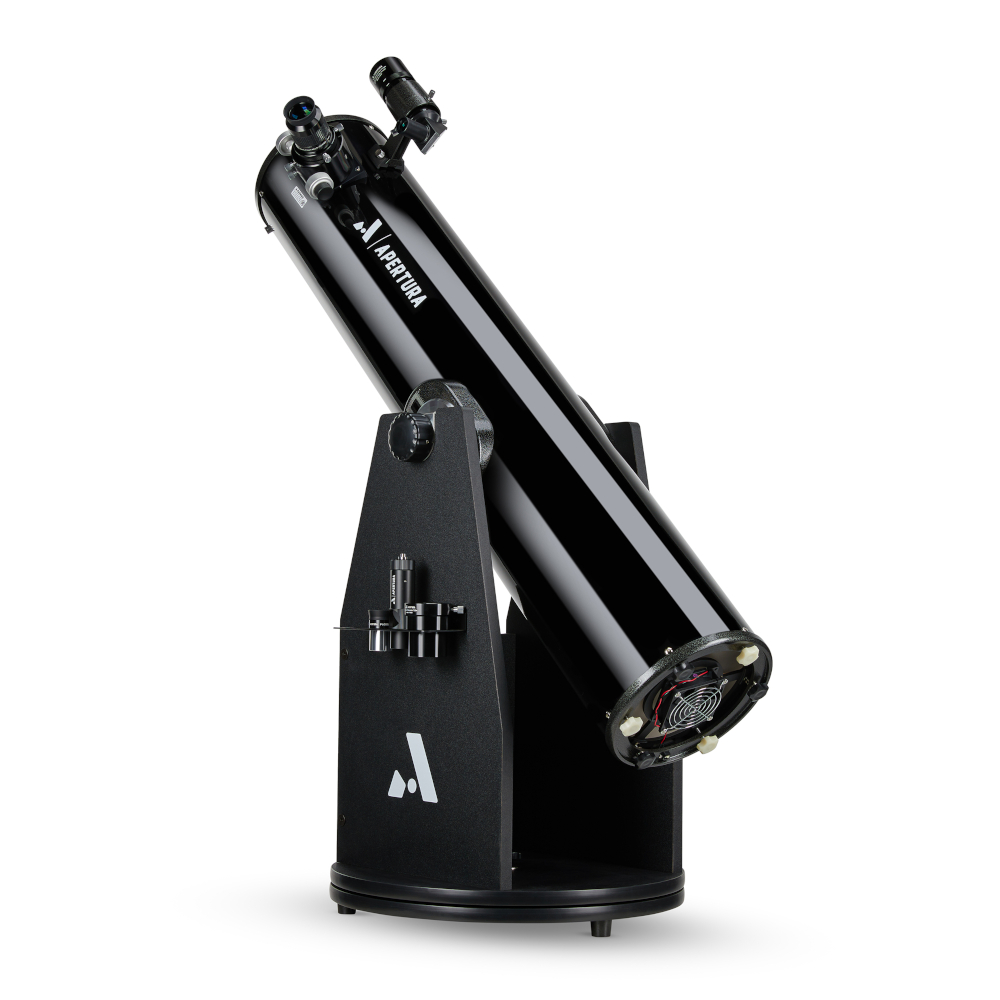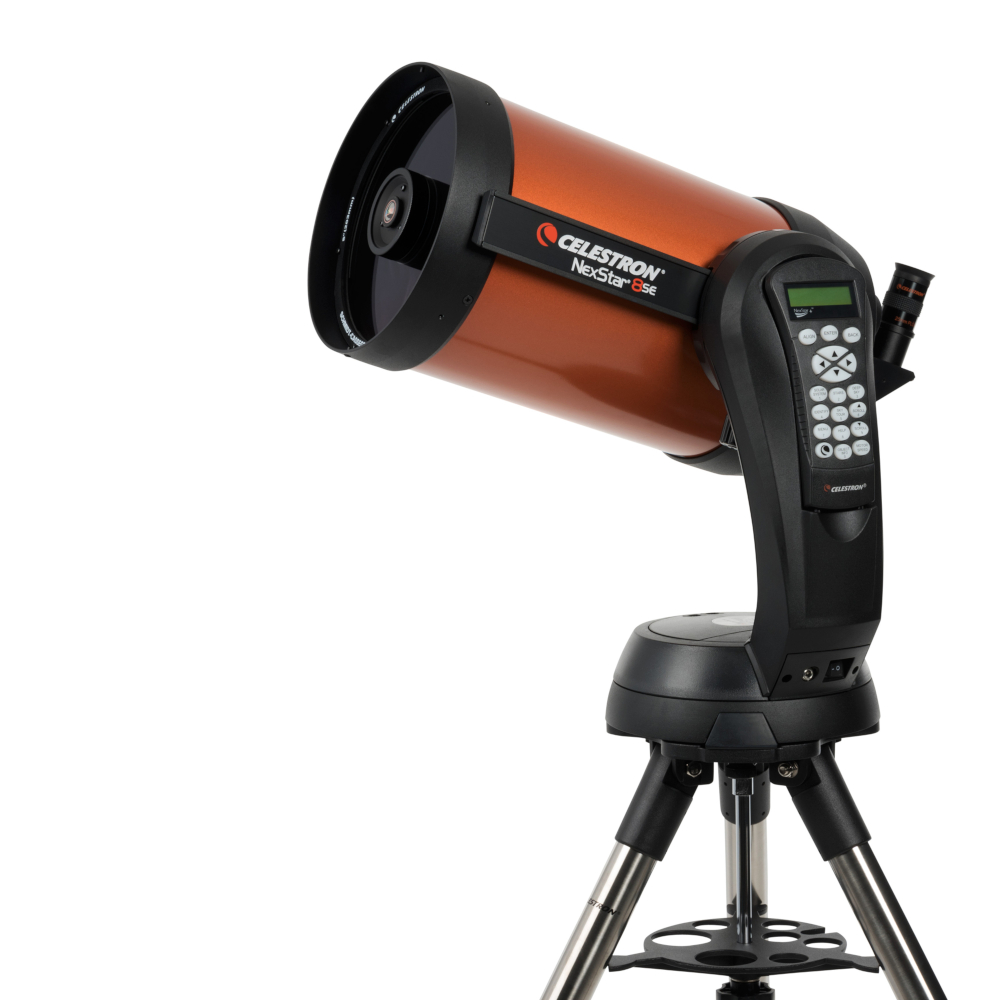What is the Best Telescope to Buy?
There is no such thing as a "best telescope", only the best telescope for you at this point in your astronomy adventure. Today your best telescope might be an 8" Dobsonian, but a year or two from now you may be looking for a Celestron EdgeHD telescope on an equatorial mount. It all depends on what interests you most and which compromises you are willing to make (or NOT).
To get the most out of the information from this point on, take a look at the five questions we asked in the How to Choose a Telescope section and think about how they apply to you. There are several characteristics you will want to pay attention to when buying a telescope, including...
Aperture: An old adage about choosing the best telescope goes like this: "Buy the biggest telescope you can afford that you can set up by yourself and will use..." While there is obviously a bit more to it than that, this is wise advice because it is a fact that the bigger the diameter of the primary optics, the more you will see. So it would be a no-brainer to get the biggest telescope you can afford, right?
Here is where the second and third parts of the adage come into play: "...that you can set up by yourself and will use." The bigger the optics, the bigger and heavier the telescope. If you buy a telescope that is heavier than you can handle alone, you will tend to use it less. You'll look at that big beautiful telescope and say, "maybe tomorrow night". If that keeps happening, it doesn't matter how big your telescope is because it is not being used. Sure, it looks impressive to friends, but it will have a tendency to gather dust.
Get a Dobsonian telescope if you want a lot of aperture for less money and don't care about motors and electronics! Dobs make a perfect first telescope, and many, many amateur astronomers never outgrow it. Even if they decide to get into astrophotography and buy another telescope on an equatorial mount, most Dobsonian owners love their telescope enough to keep it and pull it out whenever they want to experience the cosmos visually.
Schmidt-Cassegrain telescopes use a folded light path design to keep the tube assembly portable for their aperture. For example, a 9.25" SCT weighs just 20 pounds and is only 22" long, making it fairly easy to hoist onto an equatorial mount if you so choose. The point is, if you want aperture, portability AND electronics, look into a Schmidt-Cassegrain or EdgeHD telescope in the size you'd like, and then choose whether to have it ride on an equatorial mount and tripod or a computerized alt-azimuth mount and tripod. Either works great for visual and short exposure photography, but for true astro-imaging, choose an equatorial mount.
Focal Length: The focal length is the distance, given in millimeters, from the primary mirror to the point where the light rays come together in focus. For a refractor or a Newtonian reflector, the focal length gives a good indication of how long the tube is. For catadioptric telescopes like the Schmidt-Cassegrain, knowing the focal length is not a clue to the tube length since the optical path is folded to create a more portable telescope.
The focal length also affects the field of view. Longer focal length telescopes have a narrower field of view but more magnification, while a shorter focal length telescope has a wider field of view that works great for big, faint deep sky objects viewed visually or for astrophotography. You can buy both reflectors and refractors in shorter or longer focal lengths.
Lots of times the focal ratio is displayed rather than the focal length when shopping for a telescope. The focal ratio can be calculated if you have the focal length and aperture. Just divide the aperture (convert to millimeters first) into the focal length to get the focal ratio. Once you get used to it, seeing the focal ratio gives you a good indication of the field of view. The smaller the f number, the wider the field and more optimized for astrophotography.
Schmidt-Cassegrain and EdgeHD telescopes have a focal ratio of f/10. This is a good combination of field of view and magnification for people who want to do a bit of everything the astronomy hobby has to offer. There are also focal reducers available to shorten a longer focal length and create a wider field that is better for astro-imaging, especially with today's larger sensors.
Choice of Telescope Mount: You can buy telescopes on either an equatorial mount or an alt-azimuth mount, or you can buy a telescope OTA, or optical tube assembly, without a mount. Choosing which mount type is best for you is fairly straightforward, so let's take them one at a time:
Telescopes on Alt-Azimuth Mounts: Telescopes that come with an alt-azimuth mount are a popular choice for beginners or as a kid's telescope due to their ease of use and relative portability. An alt-azimuth mount is designed to move north, south, east or west, either manually or electronically via a hand controller. These simple movements make an alt-azimuth mount a great choice if you want to use your refractor or catadioptric telescope for observing in the daytime as well as at night. That is because an alt-azimuth mount mimics the way objects move on the earth: up, down, back and forth. Alt-azimuth telescopes are also a good choice for visual astronomy. It is simple enough to make adjustments in both axes (north/south, east/west) as celestial objects shift position due to the earth's rotation. A Dobsonian telescope is a good example of a simple alt-azimuth design. Simply push, pull or rotate the telescope to find and follow the celestial object of your choice! Telescopes on computerized alt-azimuth mounts, like the Celestron NexStar SE do an amazing job of finding and tracking celestial objects for visual astronomy, and a user could even take quick pictures of the Moon and bright planets, but if you want to take astro-images of objects out of our solar system, it will require an equatorial mount.
Telescopes on Equatorial Mounts: Equatorial mounts can be polar-aligned to compensate for the Earth's rotation, allowing them to manually or electronically track celestial objects. We recommend you buy an equatorially mounted telescope if you are intrigued by the idea of astrophotography. You can buy a manual equatorial mount (no motors) and use it just fine for visual astronomy, but if astro-imaging is in your future, we recommend you buy a telescope on a computerized equatorial mount. While there are still equatorial mounts on the market that have motors available for both axes (a minimum requirement for astrophotography), computerized mounts are more plentiful than ever and can be an economical choice since you won't have to worry about adding motorization to your manual mount later on. If you already have a telescope optical tube assembly and plan to buy an equatorial mount separately, make sure it has enough capacity to carry the weight of your telescope, camera, or any other equipment you plan to ride on your scope.
Telescope Optical Tube Assemblies or OTA: You can buy an OTA if you already have a good mount and want to upgrade your telescope system. Make sure your mount can handle the weight of the telescope you plan to buy. Amateur astronomers also buy telescope optical tubes so they can build a custom telescope system, with an equatorial mount and either a traditional tripod or placed on a pier in their personal observatory. Most of us won't be able to realize the dream of an observatory, but for those who have the means and the land available, it is a wonderful way to start observing at a moment's notice and never have to set up your telescope again.


